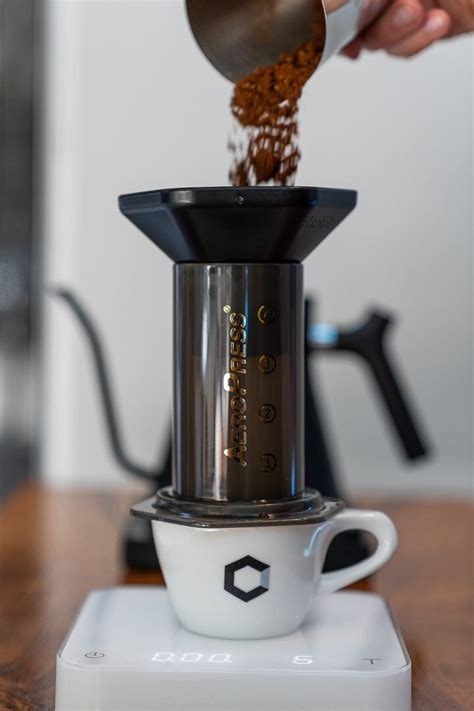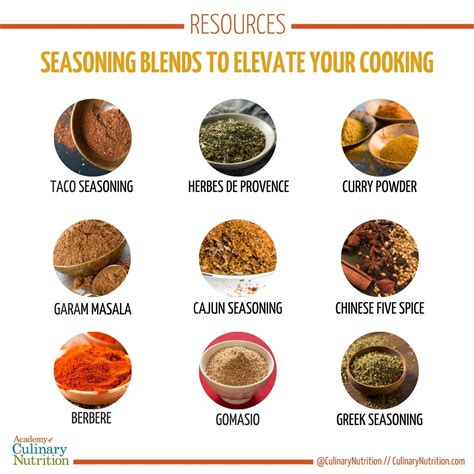LIIT Workouts to Get Fit and Recover Faster
Elevate your fitness with Low-Intensity Interval Training: a mindful approach for optimal health and faster recovery. Start your LIIT journey today.More

While fitness fanatics are buzzing about high-intensity interval training, it might not be the perfect workout route for everybody. The undeniable benefits of HIIT should be celebrated, but you might prefer intervals of jogging and walking to intervals of sprinting and jogging. We'll introduce you to HIIT's less-spirited and more laid-back cousin called LITT.
In the ever-evolving landscape of fitness, where high-intensity workouts often take center stage, a gentler alternative has been gaining recognition for its effectiveness in promoting overall health and swift recovery. Low-Intensity Interval Training (LIIT) has emerged as a viable option for those seeking a balanced approach to fitness that not only helps achieve and maintain a healthy physique but also prioritizes the crucial aspect of recovery.
By blending moderate-intensity exercise with strategic intervals, LIIT presents a pathway to improved cardiovascular health, endurance, and muscular well-being. In this article, we explore the distinct advantages of LIIT, shedding light on how this mindful approach to fitness can be a game-changer for those aspiring to get fit and recover faster.
What is Low-Intensity Interval Training (LIIT)
Low-intensity interval training (LIIT) is a form of exercise that involves alternating between periods of low-intensity activity and rest or lower-intensity activity. It is similar to high-intensity interval training (HIIT) but involves lower levels of effort during the active phases. The goal of LIIT is to improve cardiovascular fitness, endurance, and overall health.
In a typical LIIT workout, people perform exercises or activities at a moderate or low intensity for a set period, followed by a period of rest or lower-intensity activity. They repeat this cycle for the duration of the workout.
LIIT can involve various forms of exercise, such as walking, cycling, swimming, or bodyweight exercises. The key is to maintain a steady, manageable intensity during the active phases, allowing you to sustain the workout for a longer duration.
While HIIT is known for its time efficiency and ability to produce significant fitness gains in a shorter amount of time, LIIT is suitable for those who may be beginners, have certain health concerns, or simply prefer a more moderate and sustainable approach to exercise.
As with any exercise program, it's essential to consult a healthcare professional or fitness expert to determine the most appropriate level of intensity and duration based on individual fitness levels and health status.
Comparison LIIT vs. HIIT
Low-Intensity Interval Training (LIIT) and High-Intensity Interval Training (HIIT) are two different approaches to exercise that involve alternating between periods of activity and rest. Here's a comparison of LIIT and HIIT based on various factors:
Intensity
— LIIT: Involves lower levels of intensity during the active phases. The goal is to maintain a moderate, sustainable effort.
— HIIT: Involves short bursts of very high-intensity exercise followed by periods of rest or lower-intensity activity. The focus is on maximum effort during the active phases.
Duration
— LIIT: Typically involves longer workout durations compared to HIIT. Low-intensity interval training workouts can range from 30 minutes to an hour or more.
— HIIT: Typically involves shorter workout durations due to the high intensity. HIIT sessions are often 20–30 minutes, with the actual high-intensity intervals lasting only a fraction of that time.
Cardiovascular Benefits
— LIIT: Improves cardiovascular health and endurance through sustained, moderate-intensity exercise.
— HIIT: Also improves cardiovascular health but in a more time-efficient manner.
Caloric Burn
— LIIT: Burns calories during the workout, with a focus on fat metabolism. The total calorie burn per session may be lower compared to HIIT, but it is comparable over time. The number of calories burned over 60 to 90 minutes of LIIT could be similar to the number burned during a 30-minute HIIT workout session.
— HIIT: Burns calories during the workout and continues to burn calories post-exercise due to the afterburn effect (excess post-exercise oxygen consumption or EPOC). HIIT can result in a higher total calorie burn in a shorter time frame.
Suitability for Beginners
— LIIT: More suitable for beginners, older adults, or individuals with lower fitness levels due to its lower intensity and gradual progression.
— HIIT: May be challenging for beginners, and some people may need to build up their fitness levels before attempting high-intensity workouts.
Joint Impact
— LIIT: Generally gentler on the joints, making it suitable for individuals with joint concerns.
— HIIT: Higher-impact activities may pose more stress on the joints, and individuals with certain joint issues may need modifications or choose lower-impact exercises.
Risk of Overtraining
— LIIT: Carries a lower risk of overtraining compared to HIIT. LIIT is sustainable for regular, consistent workouts.
— HIIT: The higher intensity of HIIT may increase the risk of overtraining, and it often requires adequate recovery time between sessions.
Variety of Activities
— LIIT: Can be adapted to various activities, including walking, cycling, swimming, or bodyweight exercises.
— HIIT: This can be applied to different exercises, including running, cycling, strength training, and more.
Ultimately, the choice between LIIT and HIIT depends on individual goals, fitness levels, preferences, and any underlying health considerations. Both approaches offer unique benefits, and some individuals may find success in combining elements of both in their overall fitness routine.
The Role of Heart Rate Zones in Interval Training
Heart rate zones play a significant role in interval training. These zones are specific ranges of heartbeats per minute (bpm) that correspond to different levels of exercise intensity.
Heart rate zones are essentially an indication of how hard your heart is working to pump your blood and keep up with the demands of what you’re doing. The higher your heart rate, the higher the heart rate zone you’re in, and the harder your body is working to keep up.
While heart rate measuring devices are widely available, they are not essential. A good indication of your heart rate without a heart rate monitor is how easily and for how long you can hold a conversation with someone while working out.
These zones can help individuals tailor their workouts to achieve specific fitness goals. The commonly used heart rate zones are based on a percentage of your maximum heart rate (MHR), and the following typical heart rate zones are guidelines, not rules:
Let's start with the Resting Heart Rate (RHR)
This is the number of heartbeats per minute while at complete rest.
RHR is a baseline measure that can provide insights into overall cardiovascular health.
Zone 1 — Warm-Up Zone
Low intensity at 50–60% of your MHR
This zone is for warming up the body and gradually increasing heart rate and blood flow.
At this rate, 85% of the calories burned are fat, which will be fewer than exercising at a higher intensity level. Nevertheless, you’re able to sustain this zone for a longer amount of time, increasing the percentage of calories you burn.
At this intensity level, you can easily hold a conversation with someone while working out.
Zone 2 — Fat-Burning Zone
Moderate intensity at 60–70% of MHR
This intensity level maximizes fat burning at about 65% of the calories burned. This means that body fat will provide energy, while total calorie expenditure tends to be lower compared to higher-intensity zones.
It is also the zone for the lower-intensity active recovery interval level in LIIT.
This zone helps maintain cardiovascular health and builds endurance, and light conversation is possible, although you might have to stop to take a breath occasionally.
Zone 3 — Aerobic Zone
Vigorous Intensity at 70–80% of MHR
At this level, around 45% of the amount of calories burned are fat. This is the higher intensity interval level for LIIT and the lower intensity level for active recovery when doing HIIT workouts.
This zone is where aerobic fitness and endurance are improved. It's suitable for longer-duration activities, and it takes effort to have conversations at this heart rate level.
Zone 4 — Anaerobic Zone
High Intensity at 80–90% of MHR
At this intensity level, you’re burning calories but no fat to fuel you.
This zone improves cardiovascular and anaerobic fitness, which is important for activities that involve short bursts of intense effort, like sprinting or high-intensity interval training (HIIT).
Most people cannot maintain this heart rate level for longer than 15 minutes. While a few words are possible, conversations are almost impossible.
Zone 5 — Red Line Zone
Maximum Intensity at 90–100% of MHR
This is the maximum effort zone, often reserved for short bursts of all-out intensity to improve power and speed. It's typically seen in high-intensity interval training (HIIT), but only for a few minutes at a time. Talking while working in the red zone is out of the question.
To estimate your MHR, a common method is to subtract your age from 220 (e.g., MHR = 220 — age). Keep in mind that individual variations exist, and more accurate assessments may involve fitness tests or monitoring during exercise.
By monitoring your heart rate during interval training, you can ensure that you are pushing yourself hard enough during the high-intensity intervals and recovering adequately during the rest periods. This personalized approach based on heart rate zones helps optimize the effectiveness of interval training for individual fitness levels and goals.
It may take a while to see the results of LIIT, as high-intensity interval training (HIIT) exercises burn plenty of calories quickly and encourage muscle growth.
On the other hand, engaging in low-intensity interval training (LIIT) exercises will burn more fat than HIIT, but won't result in the same level of muscle growth as their high-intensity counterparts. If you're looking for visible results, you'll need a little patience. But these exercises offer numerous internal health benefits.
Variety in exercise routines is always a good idea. By combining both LIIT and HIIT, you can enjoy the benefits of both low-impact, sustainable exercise and high-intensity, calorie-burning sessions.
This variety can help prevent boredom, reduce the risk of overuse injuries, and address different fitness aspects such as endurance, strength, and flexibility.
It's important to tailor your workout routine to your individual fitness level, goals, and any existing health considerations. Consulting with a fitness professional or healthcare provider before starting a new exercise program is always a good idea.
Exercises to Include in LIIT
Low-intensity interval Training (LIIT) focuses on sustained, moderate-intensity exercise with intermittent rest or lower-intensity periods. Here are five LIIT exercises that you can incorporate into your workout routine:
1. Brisk Walking
Take your workout outdoors or use a treadmill for brisk walking. Maintain a steady pace, keeping your heart rate elevated but still allowing for comfortable conversation.
— Interval Approach: Alternate between periods of brisk walking and slower-paced walking or complete rest. For example, walk briskly for 2–3 minutes, then slow down for 1–2 minutes of active recovery.
2. Cycling
Whether on a stationary bike or a road bike, cycling at a moderate pace is an excellent LIIT exercise. Adjust the resistance to create a comfortable but challenging intensity.
— Interval Approach: Cycle at a moderate pace for 3–4 minutes, followed by a brief period of lighter cycling or rest. Repeat these reps throughout your LIIT workout cycle.
3. Bodyweight Squats
Stand with your feet shoulder-width apart and perform squats by bending your knees and lowering your hips, keeping your back straight. Use your arms for balance.
— Interval Approach: Perform bodyweight squats for 1–2 minutes, then take a short break or switch to a lower-intensity exercise like marching in place for 1 minute.
4. Swimming
Swim at a comfortable pace, focusing on maintaining a steady rhythm. Swimming is a low-impact, full-body exercise suitable for LIIT.
— Interval Approach: Swim laps at a moderate pace for 3–4 minutes, followed by a slower lap or rest period. Repeat this pattern to create intervals during your swim.
5. Bodyweight Lunges
Stand with feet together and take a step forward with one foot, bending both knees to lower your body. Push off the front foot to return to the starting position and switch legs.
— Interval Approach: Perform bodyweight lunges for 1–2 minutes, then take a short break or transition to a lower-intensity exercise like stepping side to side for 1 minute.
Other types of exercise suitable for LIIT include planks, push-ups, and burpees.
Tips for LIIT Exercises
— Focus on maintaining a steady, controlled pace to keep the intensity moderate.
— Listen to your body, and if an exercise feels too intense, modify or choose a lower-intensity option.
— Include a warm-up and cool-down in your LIIT workout to enhance safety and flexibility.
— Gradually increase the duration and intensity of your LIIT exercises as your fitness level improves.
Remember, the key to LIIT is to find a sustainable intensity that allows you to keep moving for an extended period while still challenging your cardiovascular system.
Benefits of LIIT
Low-Intensity Interval Training (LIIT) workouts offer several benefits, making them a suitable option for people with different fitness levels and preferences. Here are some advantages of incorporating LIIT into your fitness routine:
-
Accessibility for Beginners: LIIT is often more accessible for beginners or those who are new to exercise. The lower intensity allows individuals to ease into a workout routine without feeling overwhelmed.
-
Reduced Impact on Joints: The lower intensity of LIIT exercises can be gentler on the joints compared to higher-impact activities. This makes it a suitable option for individuals with joint issues or those who prefer a lower-impact workout.
-
Sustainability: LIIT workouts are generally sustainable over a longer duration. People may find it easier to maintain a consistent exercise routine when the intensity is moderate, making it a viable option for those who want to establish a long-term fitness habit.
-
Improved Cardiovascular Health: LIIT provides cardio benefits by improving heart health and endurance. The consistent, moderate activity helps enhance aerobic fitness without the extreme exertion associated with high-intensity workouts. Engaging in LIIT regularly is associated with a lower risk of developing cardiovascular diseases, including heart disease and stroke. The cumulative cardiovascular benefits contribute to a healthier heart and vascular system.
-
Blood Pressure Management: LIIT has been shown to help manage blood pressure. The controlled intensity and longer durations contribute to the gradual development of cardiovascular health, which can positively impact blood pressure regulation.
-
Weight Management: LIIT can contribute to weight management by promoting fat metabolism. While it may not burn as many calories per minute as high-intensity workouts, the longer duration can contribute to overall energy expenditure.
-
Adaptability to Different Activities: LIIT can be applied to various forms of exercise, including walking, cycling, swimming, or bodyweight exercises. This versatility allows individuals to choose activities that align with their preferences and fitness goals.
-
Reduced Risk of Overtraining: Compared to high-intensity training, LIIT carries a lower risk of injuries, overtraining, or burnout. It provides a balanced approach that supports recovery and reduces the likelihood of injuries associated with extremely intense workouts.
-
Stress Reduction: Moderate-intensity exercise, as seen in LIIT, has been associated with stress reduction and improved mood. The release of endorphins during these workouts can contribute to a sense of well-being and relaxation.
-
Suitable for Cross-Training: LIIT can complement other forms of training or serve as a recovery workout between more intense sessions. It allows for a well-rounded fitness approach that includes different intensities and activities.
As with any exercise program, it's essential to tailor the intensity, duration, and types of workouts to individual fitness levels and goals. Consulting with a fitness professional or healthcare provider can help create a personalized plan that aligns with your specific needs and preferences.
Recovery Time LIIT vs. HIIT
The recovery time after Low-Intensity Interval Training (LIIT) is shorter compared to High-Intensity Interval Training (HIIT). The intensity and nature of the two types of workouts contribute to differences in the required recovery period. Here's why recovery time may be shorter after LIIT:
1. Intensity
— LIIT: Involves lower levels of intensity during the active phases. The moderate intensity is less demanding on the body, leading to less muscle fatigue and a shorter recovery period.
— HIIT: Involves short bursts of very high-intensity exercise, which can lead to significant muscle fatigue and metabolic stress. The body may need more time to recover from the intense effort.
2. Muscle Fatigue
— LIIT: Results in less muscle fatigue compared to HIIT. The moderate intensity allows for a more sustained effort without causing as much muscle damage.
— HIIT: Often induces muscle fatigue and microtrauma due to the explosive and high-force movements, leading to a longer recovery period as the muscles repair and adapt.
3. Metabolic Stress
— LIIT: Results in lower metabolic stress compared to HIIT. The body's energy systems are not pushed to their maximum capacity, reducing the need for an extended recovery period.
— HIIT: Creates a higher metabolic demand and an oxygen debt, contributing to the afterburn effect (excess post-exercise oxygen consumption or EPOC). This elevated metabolic state may require more time for recovery.
4. Central Nervous System (CNS) Fatigue
— LIIT: Places less stress on the central nervous system, resulting in less CNS fatigue. The nervous system recovers more quickly after moderate-intensity exercise.
— HIIT: Involves rapid and forceful movements that can induce greater CNS fatigue. Recovery of the nervous system may take longer after intense intervals.
5. Injury Risk
— LIIT: With its lower intensity and reduced impact, LIIT typically poses a lower risk of injury. This can contribute to a quicker recovery between sessions.
— HIIT: Higher-intensity activities may increase the risk of overuse injuries or strains, necessitating a longer recovery period to prevent injuries and promote tissue healing.
While LIIT generally involves a shorter recovery time, individual responses to exercise can vary. Some people may find that they recover quickly after HIIT training sessions, especially if they are accustomed to high-intensity training. People need to listen to their bodies, allow adequate recovery time, and adjust the frequency and intensity of their workouts based on their fitness level and overall health.
Conclusion
In the pursuit of fitness goals, the significance of recovery cannot be overstated. Low-Intensity Interval Training (LIIT) stands as a testament to the idea that exercise doesn't have to be intense to be effective.
Offering a more sustainable and accessible option for individuals of varying fitness levels, LIIT not only facilitates the journey to physical fitness, but also prioritizes recovery through its moderate approach.
By incorporating LIIT into your fitness routines, you embrace a holistic strategy that helps you reach your fitness milestones and fosters quicker recovery, ensuring that your body is nurtured and resilient.
In choosing LIIT, you’ll embark on a mindful and balanced fitness journey that aligns with your well-being goals, proving that getting fit and recovering faster can indeed go hand in hand.

 mainadmin
mainadmin 










